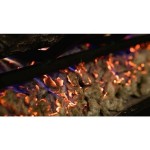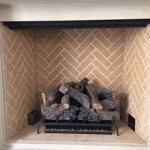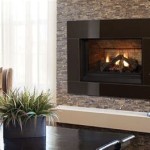Can You Spray Paint A Brick Fireplace? A Comprehensive Guide
A brick fireplace can be a striking focal point in a home, adding character and warmth to a living space. However, over time, the brick may become outdated, discolored, or simply not align with the current aesthetic preferences. One common question that arises during home renovation projects is whether it's possible and advisable to spray paint a brick fireplace. The answer is yes, you can spray paint a brick fireplace. However, the process requires careful planning, the use of appropriate materials, and adherence to specific techniques to achieve a satisfactory and lasting finish, This article provides a detailed guide on how to properly spray paint a brick fireplace, covering everything from preparation to application and post-painting considerations.
Before undertaking this project, it is crucial to assess the condition of the brick. Look for cracks, loose mortar, signs of water damage, or excessive soot buildup. Addressing these issues prior to painting is paramount for achieving a successful and durable outcome. Ignoring these problems can lead to premature paint failure and further damage to the underlying brickwork.
Essential Considerations Before Spray Painting
Spray painting a brick fireplace is not a decision to be taken lightly. Several crucial factors should be considered before commencing this project. Understanding these aspects will help determine if spray painting is the right choice and ensure a satisfactory result.
1. Brick Condition and Preparation: The condition of the brick is a primary determinant of success. Examine the surface for any flaking, crumbling, or loose material. These areas must be repaired and stabilized prior to painting. Pressure washing the brick is often necessary to remove dirt, soot, and other contaminants. Allow the brick to dry completely before proceeding, as moisture can interfere with paint adhesion. Any existing paint or sealant must be thoroughly removed through scraping, sanding, or chemical stripping to ensure a smooth and receptive surface for the new paint. Mortar joints should be inspected and repaired if necessary, as gaps and cracks can compromise the integrity of the paint job.
2. Paint Selection: Choosing the correct type of paint is crucial for a lasting finish. Latex paints, specifically those designed for masonry, are generally recommended due to their breathability and flexibility. Breathable paints allow moisture to escape from the brick, preventing blistering and peeling. Avoid oil-based paints, as they can trap moisture and lead to deterioration of the brick. High-heat paints are essential for the firebox interior to withstand the extreme temperatures. Consider the desired sheen; matte or flat finishes tend to hide imperfections better than glossier options. Always read the manufacturer's instructions and compatibility information before making a final decision.
3. Safety Precautions: Spray painting involves the use of potentially hazardous materials. Adequate ventilation is crucial to avoid inhaling harmful fumes. Wear a respirator or face mask specifically designed for paint fumes. Protect your eyes with safety goggles. Cover surrounding surfaces with drop cloths or plastic sheeting to prevent overspray. Wear gloves to protect your skin from paint exposure. Ensure the work area is free from flammable materials and sources of ignition. Adhering to these safety measures will minimize the risk of health problems and accidents.
The Spray Painting Process: A Step-by-Step Guide
Once the preliminary considerations have been addressed, the actual spray painting process can begin. Following these steps carefully will increase the likelihood of a professional-looking and durable finish.
1. Cleaning and Surface Preparation: Begin by thoroughly cleaning the brick surface. Use a wire brush to remove any loose debris. Follow this with pressure washing, using a mild detergent solution if necessary. Rinse the brick thoroughly and allow it to dry completely for at least 24-48 hours. Once dry, apply a masonry primer. Primer prepares the surface for paint, ensuring proper adhesion and preventing the paint from being absorbed unevenly by the brick. Allow the primer to dry completely according to the manufacturer's instructions.
2. Masking and Protection: Protect surrounding areas from overspray by masking off any surfaces that are not to be painted. This includes walls, floors, mantels, and any decorative elements. Use painter's tape and plastic sheeting to create a clean and defined edge. Pay particular attention to the firebox opening and ensure it is completely sealed off to prevent paint from entering the interior. The masking process is tedious but essential for achieving a professional-looking result.
3. Application of Paint: Load the chosen paint into a high-quality airless sprayer. Ensure the sprayer is properly adjusted to deliver a consistent and even coating. Begin by applying a thin, even coat of paint, working in overlapping strokes. Avoid applying too much paint in one area, as this can lead to drips and runs. Allow the first coat to dry completely before applying a second coat. Multiple thin coats are preferable to one thick coat, as they provide better coverage and adhesion. For textured brick, consider using a spray gun with adjustable settings to better reach into crevices and uneven surfaces. Once the final coat has dried, carefully remove the masking tape and plastic sheeting.
Post-Painting Considerations and Maintenance
After the spray painting is complete, several steps are necessary to ensure the longevity and aesthetic appeal of the painted brick fireplace.
1. Curing and Drying Time: Allow the paint to cure completely before using the fireplace. The curing time will vary depending on the type of paint used and the environmental conditions. Consult the manufacturer's instructions for specific recommendations. Premature use of the fireplace can damage the paint finish and release harmful fumes. Proper curing ensures the paint adheres properly and is resistant to heat and abrasion.
2. Cleaning and Maintenance: Clean the painted brick fireplace regularly to remove dust and soot. Use a soft cloth or brush and a mild detergent solution. Avoid using harsh chemicals or abrasive cleaners, as these can damage the paint finish. Inspect the paint regularly for any signs of cracking, peeling, or discoloration. Touch up any damaged areas promptly to prevent further deterioration. Regular maintenance will keep the painted brick fireplace looking its best for years to come.
3. Addressing Potential Issues: Over time, potential issues may arise with the painted brick fireplace. These can include blistering, peeling, or discoloration. Blistering and peeling are often caused by moisture trapped beneath the paint film. This can be prevented by ensuring the brick is completely dry before painting and by using a breathable paint. Discoloration can be caused by soot or other contaminants. Regular cleaning and the application of a protective sealant can help prevent discoloration. If any of these issues occur, address them promptly to prevent further damage to the underlying brickwork.
In conclusion, spray painting a brick fireplace is a feasible project that can dramatically transform the appearance of a living space. However, it requires careful planning, the use of appropriate materials, and adherence to specific techniques. By understanding the considerations outlined in this guide, homeowners can achieve a professional-looking and durable finish that enhances the beauty and value of their homes.

How To Paint A Brick Fireplace What Use Home With Janny

How To Make Over A Brick Fireplace Quickly Easily And Ly Pinkscharming

How To Paint A Brick Fireplace The Right Way

How To Paint The Inside Of A Fireplace Simple Upgrade Maria Louise Design

How To Spray Paint Fireplace Interior The Diy Playbook

How To Spray Paint A Fireplace

How To Spray Paint Fireplace Interior The Diy Playbook

How To Spray Paint A Brass Fireplace Bright Green Door

How To Paint A Fireplace Interior Design Diy Tips Direct Fireplaces

How To Paint A Brick Fireplace The Right Way








